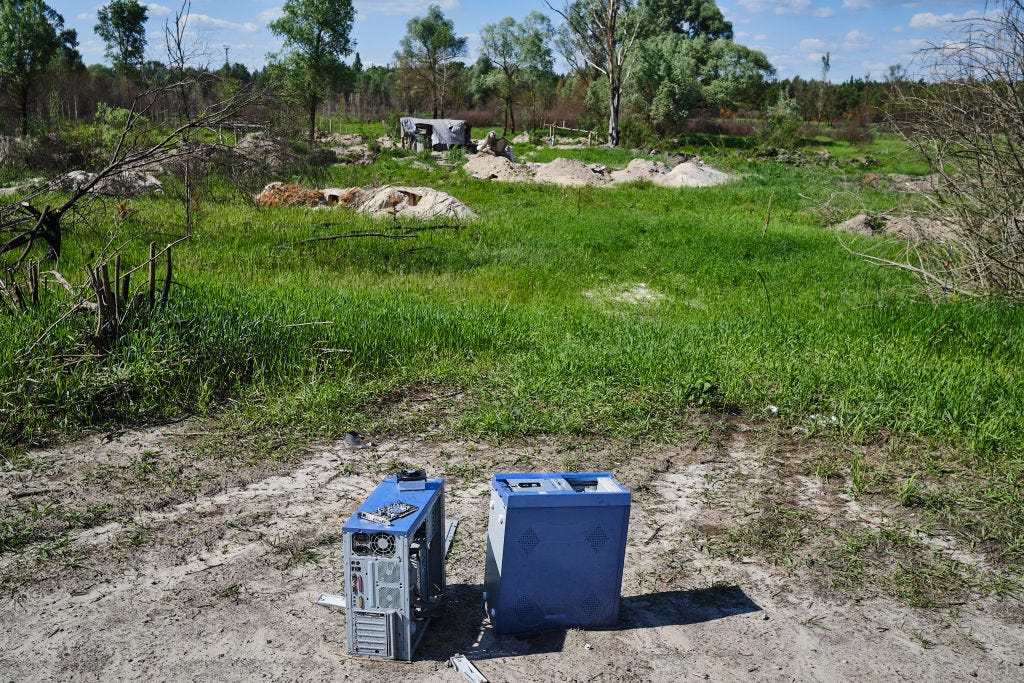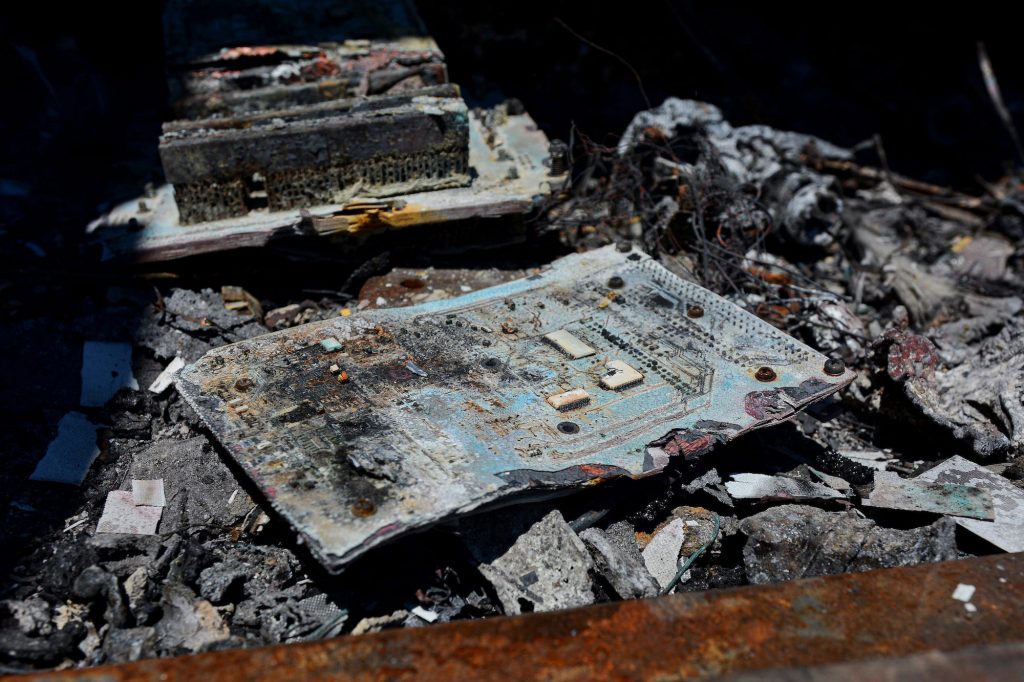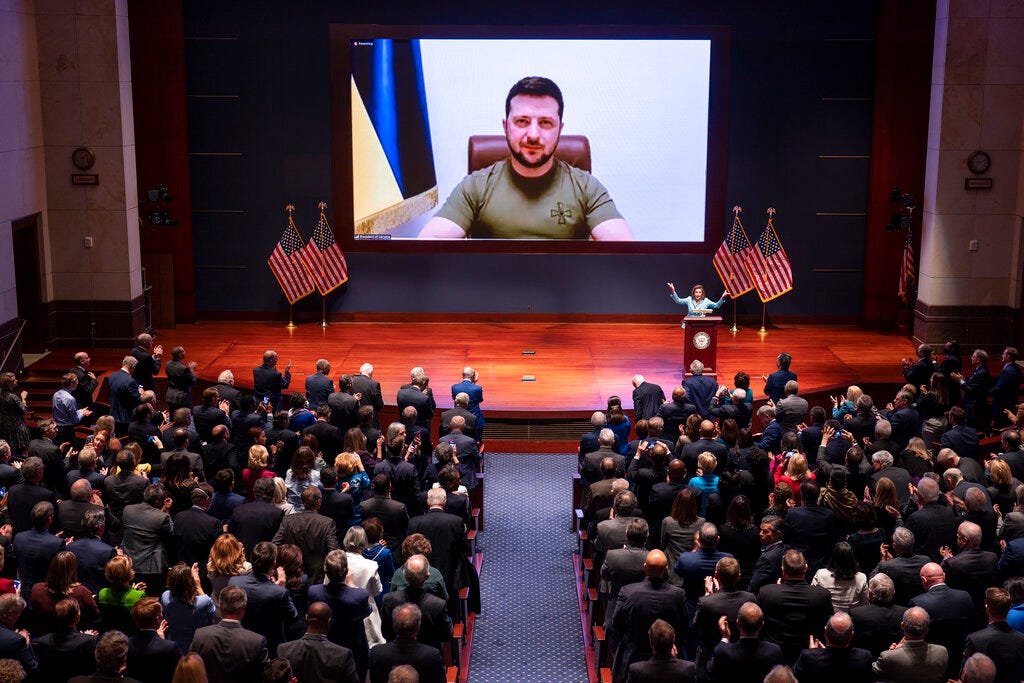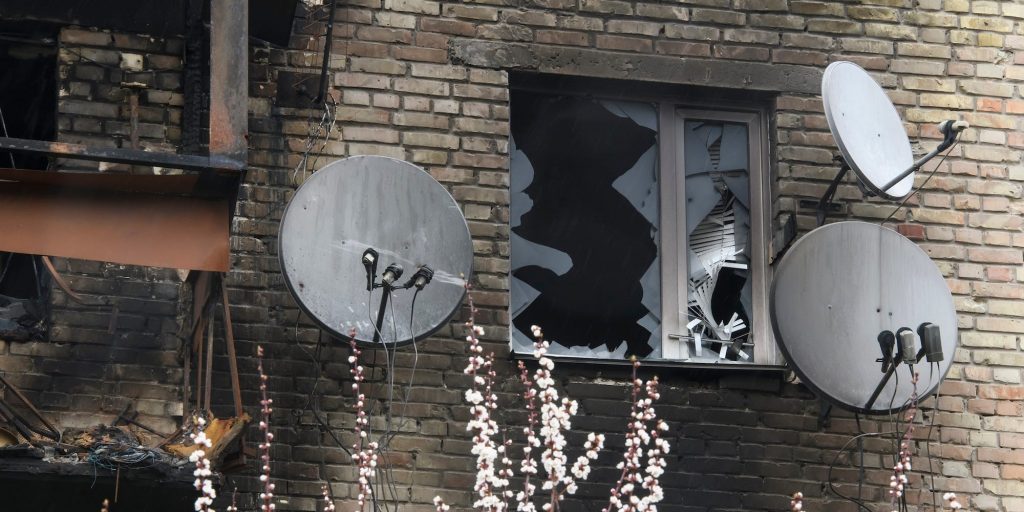- Russia's attack on Ukraine is Europe's biggest war since World War II, and the warfare itself much different.
- Cyber and electronic warfare are both playing important roles, and electronic warfare has been the most visible.
- The intense support Ukraine has gotten from Western countries has included cyber operations.
Russia's attack on Ukraine is the biggest war in Europe since World War II, and warfare has changed a lot since the Allies defeated Nazi Germany.
Although World War II-era GIs might recognize jet aircraft and shoulder-fired missiles, the battles that Ukraine and Russia are fighting in cyberspace and on the electronic spectrum would likely be more puzzling.
Shadowy forms of warfare

Cyber warfare and electronic warfare are both playing important roles in Ukraine. Electronic warfare is especially important on modern battlefields, and it has been the most visible in Ukraine.
The US Department of Defense defines electronic warfare as military activities that use electromagnetic energy to attack or disrupt an adversary's activity. It can affect everything that uses electricity and can be waged by ground, air, land, sea, and space.
There are three broad divisions of electronic warfare: Electronic Attack uses electromagnetic energy to disrupt or deny the enemy's use of the electromagnetic spectrum. Electronic Protection defends friendly forces' access to the electromagnetic spectrum. Electronic Warfare Support identifies and lists friendly and enemy electronic emissions to enable electronic attack or protection.
A prominent example of electronic warfare in Ukraine is the interception and disruption of electronic communications. Intercepted Russian communications have shown that Russian units can't talk effectively to each other or to Moscow, often due to Ukrainian interference.
Russia's military uses large, heavily armored vehicles to carry its electronic-warfare systems, but those vehicles are easy to identify visually and electronically. Ukrainian drones have been able to spot them on video and to pick up their electronic emissions.

"This makes them immediately targetable, as they are considered high-value targets," said Herm Hasken, a partner and senior operations consultant at MarkPoint Technologies, told Insider.
That also applies to Ukrainian targeting of Russia's multiple launch rocket systems. "Ukrainian counter-battery [fire] and attack by drone is becoming more effective," added Hasken, who has extensive special-operations and intelligence-community experience — including time US Special Operations Command's chief cryptologist — and several combat deployments.
Cyberwarfare has played a much smaller role in Ukraine than was expected, but it has had an impact before and during the conflict.
It is used to disrupt, destroy, and deny an adversary's access to its networks and the internet. Cyberweapons come in many forms, including wipers to delete data from devices, website defacements to discredit and mock targets, and distributed denial-of-service attacks to overwhelm websites and networks with artificial traffic.
Russia has used wipers against official Ukrainian websites and networks. Its biggest cyberattack thus far was the use of the wiper "AcidRain" against the modems and routers of the Viasat satellite communications network. As often happens with cyberweapons, AcidRain spread beyond its intended targets and took down services in other countries, affecting thousands of people, US officials say.
A little help from friends

Ukraine isn't fighting Russia on its own. The US and other countries have provided tens of billions of dollars' worth of weapons, and Western intelligence services have provided Ukraine with timely and accurate intelligence on Russian units and on Moscow's plans.
Recently, the US revealed that it had carried out offensive cyber operations in support of Ukraine. Gen. Paul Nakasone, director of the National Security Agency and commander of US Cyber Command, told Sky News that the US has "conducted a series of operations across the full spectrum: offensive, defensive, [and] information operations."
Nakasone didn't elaborate on those operations or describe their targets but the White House said they didn't cross the line that President Joe Biden has set about engaging Moscow directly.
The need for innovation and adaptability in a modern conflict are probably the most important takeaways for the US military from the war in Ukraine, Hasken said, arguing that the Pentagon should conduct a rapid review to determine how to combine cyber capabilities, special-operations forces, and space-based assets to overcome emerging threats — especially the anti-access/area-denial systems, known as A2/AD, that China is deploying to hinder US operations in the Western Pacific.
"If we are to learn anything from the current nature of warfare in Ukraine, it is that 'one size does not fit all,'" Hasken told Insider. "The US military must consider what tactics and technology will be required to combat A2/AD strategies of near-peer adversaries and competitors, particularly in the Indo-Pacific."
Stavros Atlamazoglou is a defense journalist specializing in special operations, a Hellenic Army veteran (national service with the 575th Marine Battalion and Army HQ), and a Johns Hopkins University graduate.
